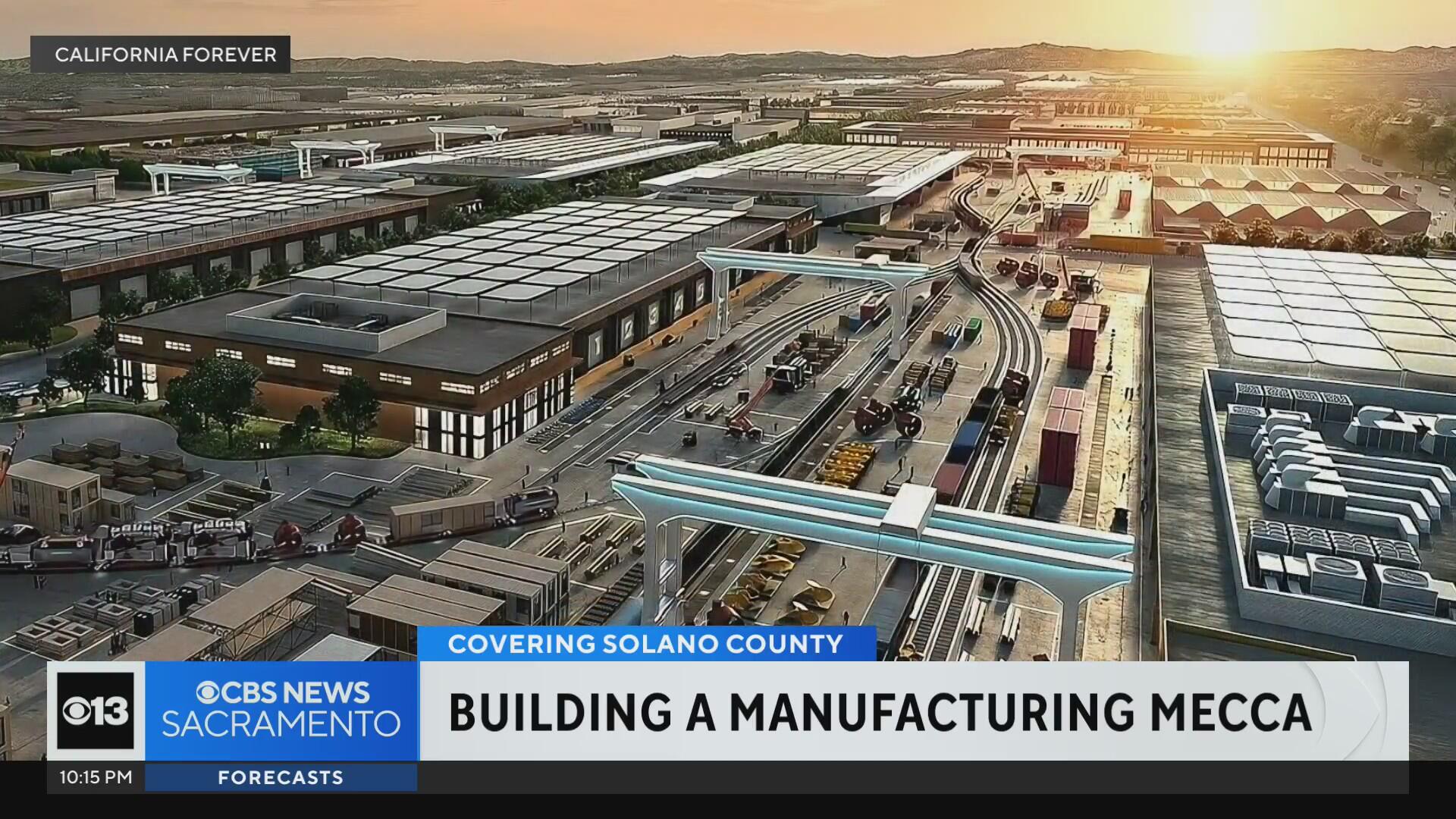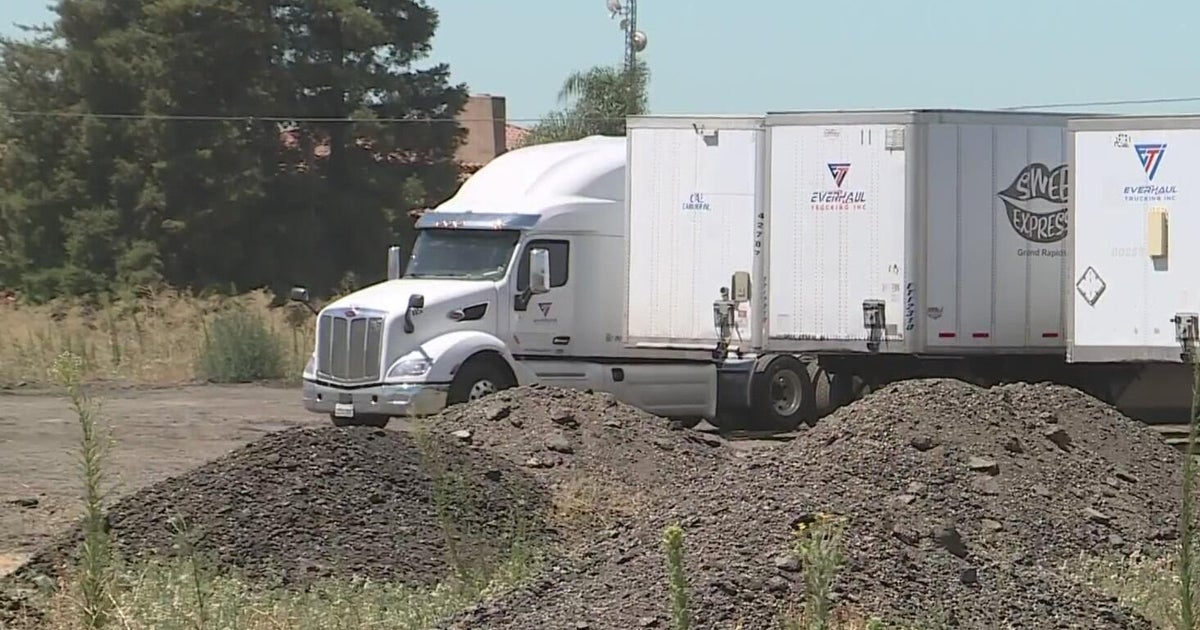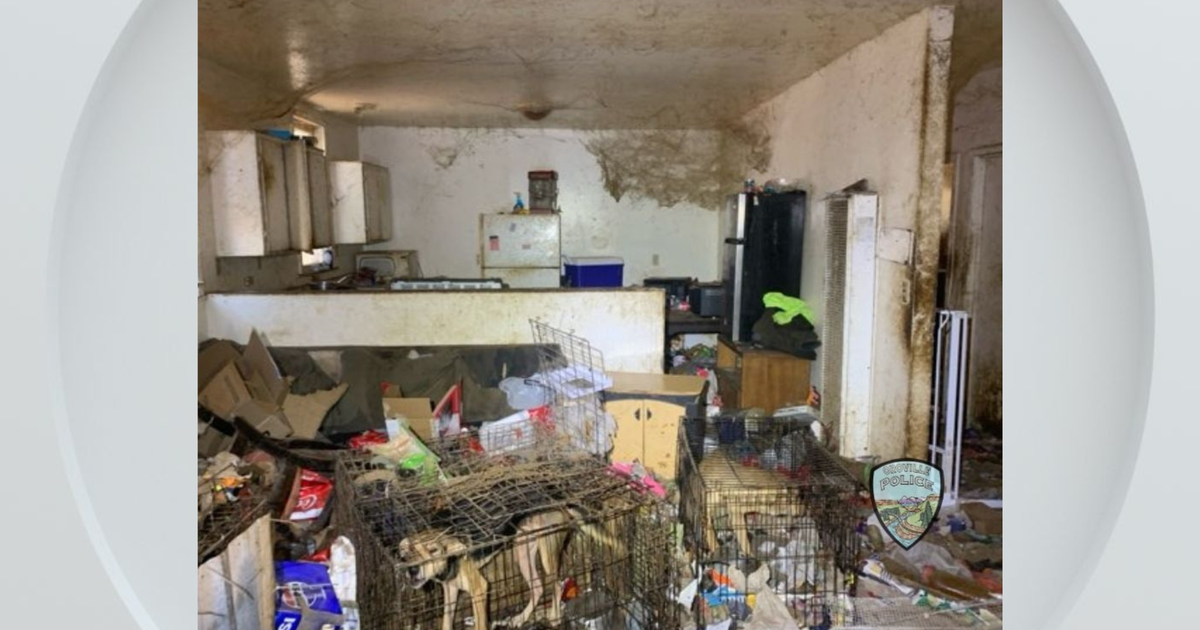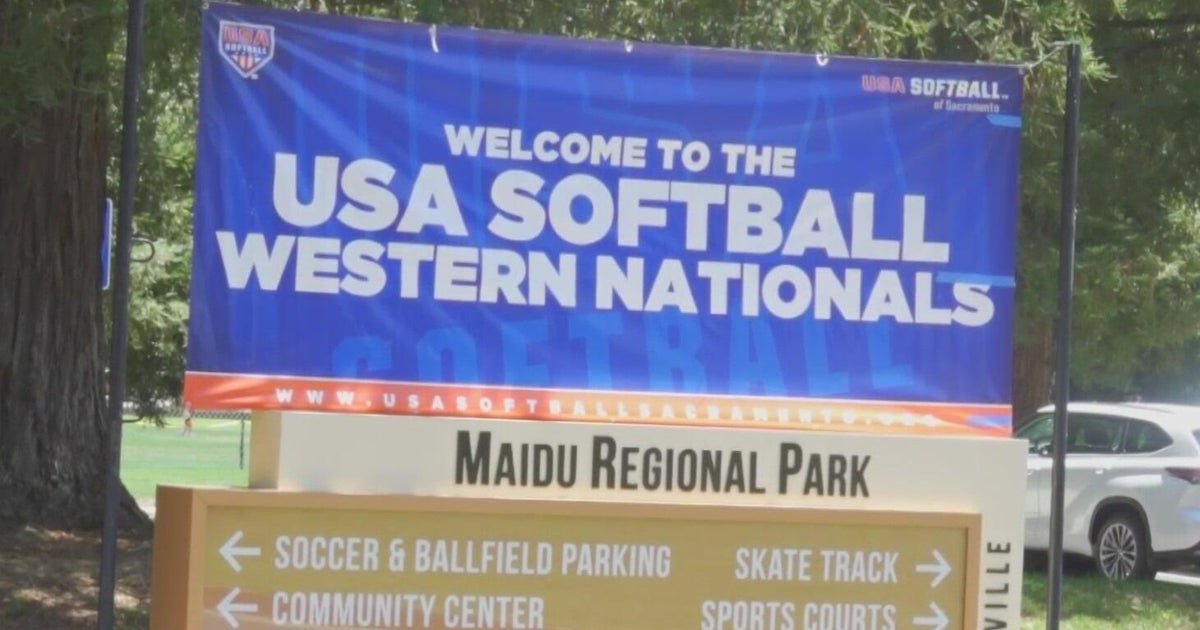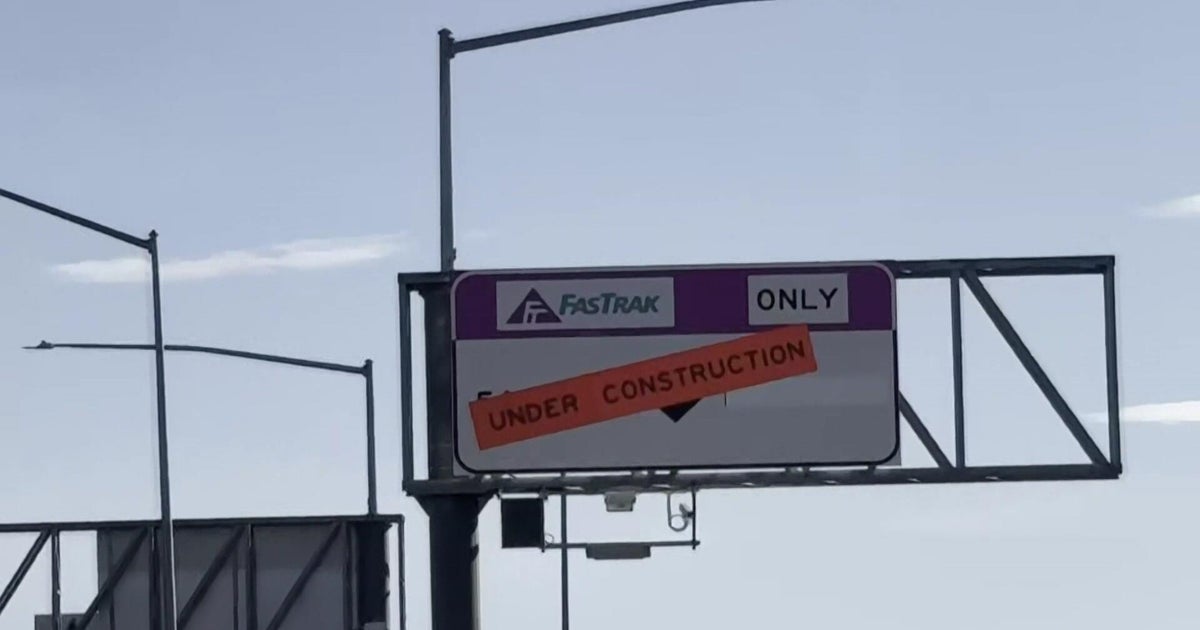California Forever CEO says manufacturing hub joins proposed new Solano County city
The project, backed by Silicon Valley investors, announced that their plan to build a new city of 400,000 people from scratch in rural Solano County has evolved.
Last week, the group revealed that they now also want to build what they say will be the "largest advanced manufacturing park in the country" to be called the It touts 90-day permitting and plenty of room for companies to scale.
California Forever owns of Solano County land, twice the size of San Francisco.
In 2024, the group pulled their measure from the general election ballot that would have put the fate of the proposed new city in the hands of Solano County voters.
A , a group that opposes the project, found that 70% of likely voters would vote "no" on the project.
In June, California Forever entered into an agreement with the city of Suisun City that allows the two parties to explore the option of Suisun City annexing California Forever's proposed new city. California Forever is fronting the cost of the research and would ultimately pay Suisun City $10 million if the project reaches final approval.
CBS13's Ashley Sharp was given 20 minutes to speak with California Forever's CEO Jan Sramek this week in an interview about his plans for the proposed new city, manufacturing park and shipyard in Solano County.
The questions and his answers follow in their entirety.
What is the vision of Solano Foundry?
JAN SRAMEK: "Solano Foundry is adding more detail to the industry and technology zone that we've proposed in the plan for the new city about a year and a half ago. So, we've really gone out and added a lot, a lot more. But really, we are going back to what the Bay Area in Northern California used to do back in the '60s and '70s and '80s, when it was the center for manufacturing and particularly high-tech manufacturing in America. I mean, I learned the other day that in the '70s, Lockheed Martin employed 28,000 people just in Sunnyvale, and we used to make rockets and guidance missile systems and components for submarines here. We want to go back to that. So, the Solano Foundry is a 2,100-acre, 40-million square foot advanced manufacturing park that is part of the new city. It would be the largest place to do advanced manufacturing in America, and the goal is really to provide a place where all of these companies that are doing incredible work in Silicon Valley can manufacture things in California, instead of sending all of those jobs to Texas or Florida."
Is the manufacturing park hand-in-hand with the proposed new city, or does one take priority over the other at this point?
Jan Sramek: "They go hand-in-hand. I mean, they really form an integrated ecosystem that is actually, at this point, in three parts. The Solano Foundry is part of the new city. It's adjacent, immediately next to the neighborhoods. Those are two of the components. Then the third component is the Solano Shipyard, which we've proposed about seven miles south of the new city, and they really work best together. One of the big challenges for manufacturers in California is that their employees cannot afford to live near where they work, and so providing workforce housing immediately next to the factories is actually one of the main reasons for why those companies are interested in staying in California."
I understand you've announced an exclusive agreement with . What is the corporate commitment right now for manufacturing companies that want to be a part of this at the ground level?
Jan Sramek: "JLL is the national leader in the space. They have an advanced manufacturing group that really has handled a substantial proportion, maybe even the majority, of all of the major companies that have brought manufacturing back to America over the last five years. They've done a lot of work on this over the last year and a half. I think they actually started somewhat skeptical that you could do manufacturing in California. But by looking at the scale of what we're doing and what we can solve at that scale, they've become huge believers in the project. Some of the companies that we announced about a year and a half ago at this point were in manufacturing and then we'll be announcing a new set later on this year."
So, no committed companies yet, but you are getting there?
Jan Sramek: "Yeah. I mean, I think for all of those companies, I believe that all of them are still interested. The challenge for us has been, you can't lease space in a city that hasn't been approved yet, and so we'll be focused on getting the approvals. And I think there's a bigger point there about California, where, in the last I want to say five years, for example, if you look at the Biden EV Act, there was $200 billion that went to subsidized manufacturing in America. And of that, only about $5 billion went to California, even though California contributed about $22 billion of the money that has gone in. So as a state, we've basically spent $17 billion subsidizing manufacturing in Texas and Florida. To keep that money in California, what we need is places where companies can actually break ground and where they can break ground next year, not in 2035."
People always talk about industry leaving California, citing that it is too expensive and difficult to operate here. It's not as large of a wave as headlines would indicate, but how do you manage that, building a manufacturing park that would neighbor Silicon Valley?
Jan Sramek: "We've had companies that have left California, but in some sense, an even bigger loss is all of the new jobs that have been created in America over the last 10 years that never came to California. So those are not employers that left. Those are employers that wanted to come here and they never did. Those are tens, probably hundreds of thousands of jobs. The work that we've done with JLL over the last year and a half was really asking companies, 'Do you want to stay in California? And if so, what is preventing you from doing it?' Universally, companies headquartered in the Bay Area say we want to stay here, but to do that, we need available land that has been permitted where we can break ground within 12 months, and we need workforce housing for our employees. So what we've done with the Foundry is design a product that caters to that, for example, by doing a lot of the entitlement and permitting work upfront. Right now, we're doing it with Suisun City through the Suisun expansion plan, where the Foundry would go into and by doing all of the approvals upfront, what that means is, if a company wants to build a factory, they can break ground within a few months, which right now is impossible in California and is one of the main reasons for why our state has lost so many of these opportunities.
What level of county approval is needed? What red tape do you, right now, have to navigate to make Foundry and the new city happen at this point?
Jan Sramek: "I mean, we're going through the process right now, and I think it's proceeding at a pretty good pace. We've signed an agreement with Suisun City to process the application and right now they're doing the work on preparing a draft environmental impact document, which I believe they've said they're looking to put out in Q1 of 2026. Eventually, it would require approval by the city council, by Solano County and by the Local Agency Formation Commission. So those are the three main approvals that we're looking at at this point."
If there was an annexation eventually approved by Suisun City does that bypass putting this back on the ballot in 2026?
Jan Sramek: "Yeah. The reason why it was on the ballot in the first place is that we initially proposed it as an unincorporated community. And in Solano County, we have a rule that basically says, growth goes into existing cities, and if you want to do anything else, you need to put it on the ballot. Then, what happened through the process is [that] increasingly, a lot of the people, including the cities, came to us and said, 'You know what? This is actually a really good idea. We understand it now. We get it. We want this here, but why don't you just do it in an existing city and kind of respect this tradition that has existed here for a long time?' And our response was, what we care about is building a great community. We care about building industry and bringing employment to Solano County, and we're very happy to do it in an existing city, if that's what they want to do. And so that's why we've been working with Suisun City and then with Rio Vista on doing just that.
So let's say that Suisun City and Rio Vista, that those annexation proposals went through. That means that California Forever's new city would get the green light to build?
Jan Sramek: "Locally, there are three bodies that would need to approve it. It's the city that is annexing it. It's the county to approve a tax-sharing agreement between them and the city, and it is the Local Agency Formation Commission. There are then some subsequent permits in terms of Fish and Wildlife and Water Resources Board and the usual things that happen at the state level. But locally, it's those three bodies, and it's essentially the same process that every other development in Solano County has followed for the last 50 years. And so, for example, at this point, Fairfield is about 40 square miles. Vacaville is about 30 square miles. Both of those cities were maybe 10 square miles 30, 40, years ago. They have grown through annexations. We would follow the exact same principle.
You hinted at something I was going to ask you. Solano County has an orderly growth initiative, passed more than 40 years ago, to prevent too-fast growth in areas that they say are not close enough already to existing cities. Have conversations started about how you meet the county's General Plan goals and California Forever's?
Jan Sramek: "I think if you look at what the orderly growth measure says, it basically says growth should go into cities. It doesn't say exactly where, in fact, sorry, it does say where. The orderly growth measure in its preamble says that growth should not go on prime farmland. But what's actually happened in Solano County, over the last 20 years — we've done the numbers — [is that] more than half of all development has gone onto prime farmlands. So what this project allows us to do is to direct growth 100% to areas that are very marginal grazing lands instead of prime farmland, and in fact, protect the agricultural heritage in Solano County that so many people care about. That, I think, was one of the big differences in public opinion that shifted over the year that we worked on the ballot measure, is people took a second look at the idea and said, you know what? Actually, this does very much comply with what we are trying to do here. We just want this to be in an existing city, instead of being a brand new community."
Part of the orderly growth initiative is that they want it to be closer to cities. It's because that is where the existing infrastructure is. So what will be the taxpayer burden when it comes to the massive infrastructure needs that a project like this requires?
Jan Sramek: "So, the project has to pay its own way. There was a guarantee that we put in the ballot initiative, and it's going to remain the case now when it goes into Suisun City. In fact, one of the reasons for why some of the opponents of the project in the past said this should go into an existing city is so that there would be a clear agency that has a responsibility for overseeing that the infrastructure is paid for by this what we are building into the public financing plan is an idea that the new community within Suisun city has to pay its own way. So it has to be fiscally sustainable. It has to pay for the schools and the police stations and the fire stations and all of that as part of the environmentally packed documents that's going to come out. That's going to be a full public financing plan, and both the public and all of the responsible agencies will be able to review that, comment on it and make sure that we pay our own way."
So, it's fair to say there will never be a taxpayer burden?
Jan Sramek: "Absolutely. Absolutely."
There are people in Solano County, not all, but a good number who deeply distrust California Forever and will not trust a project of this magnitude for that reason. How do you reconcile that?
Jan Sramek: "Yeah. I mean, I think that if you look at what's happened over the last year, there's a real difference between what the situation was two years ago and today. And I would say today, the opposition is really this fringe, small group, and they are the same people who've opposed every kind of development in Solano County for the last 25 years. They've never trusted a single developer. They've opposed essentially all projects. They've opposed, often, affordable housing. They've often opposed the building of essential services. And so I think we just have to recognize that in California, you never, or in fact, in any state, you're never going to have complete community consensus. But I think that the opposition held a rally in Suisun City a couple of weeks ago to oppose the project, and the attendance was six and a half people."
Public comment at the June 10th Suisun City council meeting on the annexation proposal was heated. There were a lot of people there. It was maybe half and half. People for it included union members and those interested in exploring the annexation because of the potential for new jobs. But there were a lot of people who said, what they've been saying from the start, is that they don't trust the proposal.
Jan Sramek: "I would say it's always interesting to see who opposes this project, and if you look at some of the council meetings that have happened in Suisun, 90% of the people who are opposing it are not from Suisun City. And so there's a long, long history in Solano County of, I think, elitism, and that shows when people oppose the project in Suisun City."
But they will say, we don't oppose growth. We oppose where it is. We don't appreciate these proposals going down winding highways that are going to need to be expanded, and there's no active sewage and plumbing. Those are the things that they think they're going to be on the hook for tax-wise. That's why I asked you the question twice about the taxpayer burden, because so many people have asked that, and they're saying, 'We don't like the location of it.' How do you respond to that?
Jan Sramek: "I mean, if you look at where growth in Solano County has gone. It's always gone at the edge of cities. I mean, that's just been the way that Fairfield grew. It's the way that Vacaville grew. It's the way that Dixon grew. And sometimes, the opponents of the project will say we should do all of the housing that we need through infill. They've been saying that for 20 years in Solano County. Do you know how many infill units have been built in Solano County in the last 20 years? Less than 500. Less than 500, so the idea that we can do all of the housing that we need in California through infill is just not true, and we see that in the housing prices. I mean, we've been trying to solve the California housing crisis kind of purely through infill for, I would say, the last 10 years. In 2017, Jerry Brown signed a package of 23 bills to end the housing crisis. In 2017, it's been almost 10 years. In those 10 years, the average home price in California has doubled. And so I think we have a long way to go. If we really want to make a dent in the situation, we're going to need an all-of-the-above kind of approach. I think we're going to need a lot of infill. We're going to need some greenfield. And when we do greenfield, we should make sure that as much as possible it goes on non-prime farmlands and areas that have low ecological values, which is exactly what this area is. Which is why in long-range planning documents going back to a 1958 plan by the Army Corps of Engineers and a 1970, 1990 plan by the Association of Bay Area Governments, this exact area was slated for master planned, new city development. But by both of those government agencies, it's precisely because it's a really good place to build.
You have ties to Silicon Valley. When you asked the companies there what they needed, they said they needed somewhere they could manufacture where their employees can live close to it. It sounds like you took a problem in Silicon Valley and are presenting this solution.
Jan Sramek: "Well, I think we're taking a problem of Solano County first. And the problem in Solano County is that more than half of the residents have to leave the county every day to go to work, many of them, by the way, to Silicon Valley. The number of young parents that I know here in Solano who have to commute two hours each way every day is astonishingly high. And so we started by: How can we build a project that helps everyone? It helps Solano County, it helps the region, and helps the state of California. It's a good time to be having the discussion. Last week, employment figures came out. The unemployment rate in Solano County increased just in the last month from 4.7 to 5.6%. The Bay Area lost 7,000 jobs in the last month, and the state of California now has the highest unemployment rate in the entire United States. And so clearly, we have this tension between a lot of the companies who want to grow here, but we've made it so difficult and so expensive to grow that they are going to other places. Then it's the residents who are paying the price because they are either unemployed or they have to commute two hours each way every day for work."
When you talk about timeline, is this ten years into the future or two? In exploring the city annexation process, we know that will take time. What would be the timeline of the green light that pushes the project forward?
Jan Sramek: "So the timeline hasn't changed from when we initially announced the project. The timeline has been to break ground in 2028, and that still remains to be the case. The annexation approach kind of changes the steps in the process about what happens first and the different agencies we have to go through, but the timeline remains to be breaking ground in 2028."
Local pushback to 'urban sprawl'
In 2024, CBS13 reported in the height of California Forever's multi-million dollar campaign that pushback was growing and resentment rising from some Solano County community members who did not support the project.
Some even accused the group of deceitfully gathering signatures in an effort to get their measure on the November 2024 general election ballot.
"The average person in Solano County, and it's a majority, doesn't trust them because of their past record of secrecy, lack of transparency, suing our family farmer neighbors. They lost all credibility. Then withdrawing from the county process and going through the backdoor of Suisun City and promoting an absurd plan? This would be the biggest annexation since the Los Angeles annexation of the San Fernando Valley," said Jim DeKloe.
DeKloe is a Solano County resident, a transplant truly, from the San Fernando Valley. He says his home is unrecognizable to him today, and it fuels his opposition to California Forever.
"It's the quintessential example of urban sprawl. So when I came to Solano County, I felt we should not do the same things and repeat these mistakes of the past," said DeKloe.
He's a Solano County biotechnology professor and biologist by trade. He also is behind Solano County's voter-backed , which says new development needs to go near existing cities, not on farmland.
"The entire growth strategy for 40 years has been designed exactly to prevent a California Forever. A city that is way out here in the middle of nowhere that requires massive infrastructure investments," said DeKloe.
It's the cost of roads, sewage and water for a development of this magnitude that some Solano County taxpayers fear will land on their backs.
"The taxpayer will pay for that one way or another, either directly or in a reduction of services. That money has to come from somewhere. It's going to come from the existing cities," said DeKloe.
DeKloe says Sramek's assurance to CBS13 that there will be no taxpayer burden does not change his mind, calling that 'spin.'
He criticizes, as have other members of the Solano County community, the process. DeKloe says California Forever should have either navigated the normal Solano County red tape to launch their new development or put their measure back on the ballot before voters.
"They are literally undermining democracy. What we wanted was a democratic vote. If the voters of Solano County said we want California Forever's vision, I would say, 'okay,' " said DeKloe. "These are outsiders trying to make money off of our backs."
DeKloe says he and others who oppose the project are not against growth. DeKloe says he even travels the country advocating for economic development.
"If you had that proposal along the I-80 corridor within one of the existing cities, we'd be all in. Increasing manufacturing is a good idea. Increasing shipbuilding, if you did it in Mare Island, would be a great idea. The infrastructure is there. The infrastructure doesn't have to be built from scratch like in the new proposed city. The problem with that is, they don't make money," said DeKloe.
He feels California Forever is making a critical error by looking to a Suisun City annexation as the project's savior.
"From the point of view of the opposition, I'll quote Napoleon: 'Never interfere with your adversary when they are making a massive mistake,' " said DeKloe.
Another perspective: Solano and Silicon Valley can do more than co-exist
The Solano Economic Development Corporation's is made up of Solano County city leaders who are both outwardly for and against California Forever's mission.
That includes Fairfield's mayor, Cat Moy, actively outspoken against the project, and Suisun City's city manager, Bret Prebula, who voiced his support for the land annexation exploration.
CBS13 asked Solano EDC for the group's stance on the new manufacturing park.
President and CEO, Chris Rico, said he did not wish to weigh in on the idea of a new city. But on the concept of new industry, he was enthusiastic.
"As the regional Economic Development Organization, we're excited about California Forever's vision to bring advanced manufacturing to Solano County. We're adjacent to the greatest innovation center in the world and we should be manufacturing their products right here in Solano County. We don't have an opinion on whether this should include a new city, but we are in favor of building more housing, particularly a more diverse supply that can support the needs, means, and desires of young professionals and families. When I speak to major employers in the region, one of their primary concerns is the ability to attract and retain young talent given the existing supply and mix of housing in Solano County," Rico told CBS13 in a statement.
